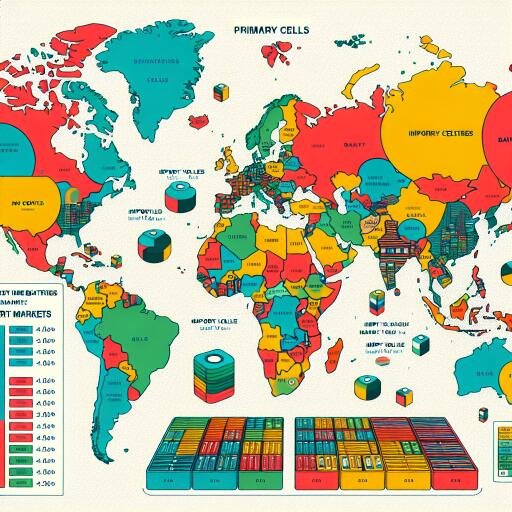
The Largest Import Markets for Primary Cell and Battery
The dynamics of the global market for primary cells and batteries are shaped by the ever-growing demand across industries ranging from consumer electronics to healthcare, automotive, and beyond. As our world becomes more interconnected, and our reliance on portable and renewable energy sources increases, certain countries have emerged as pivotal players in the importation of these essential components. Let’s delve into the countries leading the charge in the import market for primary cells and batteries as of 2022.
The United States: A Titan in Demand
At the forefront is the United States, which imported primary cells and batteries valued at a whopping $1.1 billion in 2022. This demand can be attributed to its diverse industry needs – from cutting-edge consumer electronics and automotive advancements to groundbreaking healthcare technologies. The robust American economy and its large consumer base make it a lucrative market for suppliers worldwide.
Germany: Engineering Excellence Fuels Importation
Not far behind, Germany’s import value stood at $624.7 million in 2022. Known for its engineering prowess and technological innovations, particularly within the automotive and industrial sectors, Germany’s market thrives on high-quality energy storage solutions. This sets a fertile ground for suppliers aiming to meet the country’s stringent standards.
Vietnam: The Rising Star
Vietnam, with its import value of $608.2 million, is quickly becoming a hotspot for primary cell and battery imports. This is largely due to its booming manufacturing sector, particularly in electronics, coupled with a rapidly growing consumer market. As Vietnam continues to ascend economically, its demand for energy storage solutions seems poised for further growth.
Malaysia and Hong Kong SAR: Strategic Hubs in Asia
Malaysia, leveraging its strategic position in Southeast Asia and its import value of $542.5 million, shines as a regional manufacturing hub, particularly for electronics and electrical equipment. Similarly, with an import value of $387.3 million, Hong Kong SAR acts as the gateway to China’s vast market, with its sophisticated trading services and a significant presence in the global electronics industry.
China: The Giant Consumer Market
China makes it to the list with imports worth $348.2 million, underpinning its colossal manufacturing sector, particularly for electronics. Continuous infrastructural investments and a push for technological advancements suggest a sustained growth in its import market for primary cells and batteries.
Europe’s Centrals: Netherlands, United Kingdom, and Belgium
The Netherlands, with its imports totaling $339.3 million, sits at a pivotal trading junction in Europe, while the United Kingdom’s import market, valued at $325.2 million, thrives on a strong industrial base and a push for renewable energy. Belgium, located at Europe’s heart, shows a healthy demand with imports worth $304.2 million, thanks to its advanced manufacturing sectors and a pro-innovation environment.
Singapore: The Southeast Asian Pioneer
Rounding off the list is Singapore, with a total import value of $295.0 million in 2022. Its advanced electronics manufacturing base and status as a major logistics hub in Southeast Asia make it a critical market for energy storage solutions.
Conclusion
The global import market for primary cells and batteries is not just thriving; it’s essential for the myriad technologies that drive our modern world. Leading this demand are countries like the United States, Germany, and Vietnam, among others, each contributing to a complex web of trade that spans the globe. For international suppliers, these markets represent significant opportunities, underscored by a demand that spans a broad spectrum of industries and applications. As we lean more into renewable energy and technological advancements, the importance of these markets is only set to increase, making them crucial nodes in the global supply chain of energy storage solutions.
As we continue to navigate through the evolving landscape of energy storage and consumption, keeping a pulse on these markets will be key to understanding future trends, challenges, and opportunities. Whether for manufacturers, investors, or policymakers, these vibrant import markets offer a glimpse into the future of energy and technology. The path forward is both exciting and demanding, and these countries are leading the way.





Leave a Reply